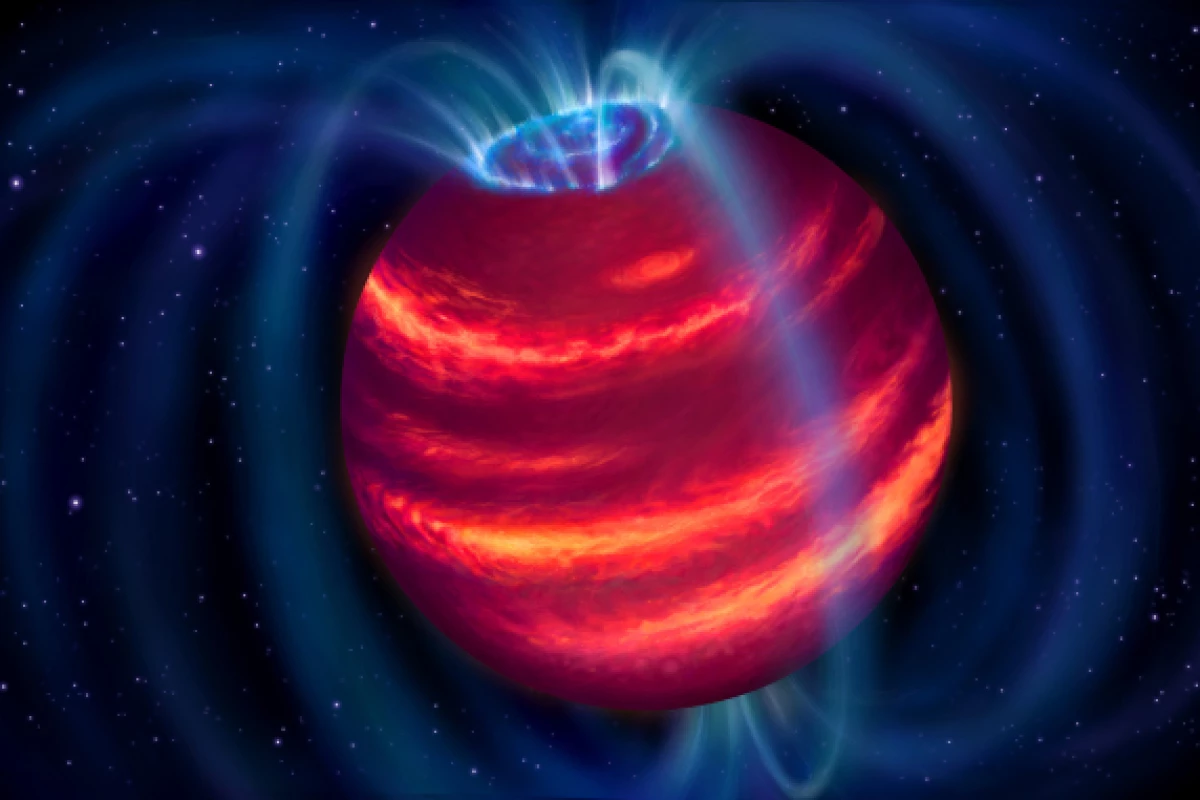Scientists in Europe and Hawaii have scored a world's first by detecting a "super-planet," also known as a cold brown dwarf or a failed star, using a radio telescope. Located 212 light-years away in the constellation of Hercules, the detection of BDR J1750+3809 may help in the search for habitable exoplanets.
First theorized to exist in the 1960s, brown dwarfs are also called super-planets because they inhabit the niche between stars and planets. They have an atmospheric composition similar to the gas giants in our solar system, but they are much larger with a mass that is up to 80 times that of Jupiter.
Unfortunately, even that huge size isn't enough to spark nuclear fusion and turn the dwarf into a proper star. Instead, it releases the heat left over from its formation. This means that they glow in the infrared band of the spectrum, making them detectable on sky surveys. In addition, they have powerful magnetic fields like Jupiter, so they emit radio waves that can be detected by radio telescopes.
Until now, the usual way of studying these objects was to detect them on infrared sky surveys, then training radio telescopes on them for further analysis. This time, "Elegast," as BDR J1750+3809 was named by the team, was first detected by the Low-Frequency Array (LOFAR) radio telescope centered in the Netherlands, and was then observed by a pair of observatories on Mauna Kea on the island of Hawaii.
According to the University of Hawaii, this detection of a brown dwarf by a radio telescope demonstrates that astronomers can detect interstellar objects that are too cold to be picked up by infrared telescopes.
"We asked ourselves, ‘Why point our radio telescope at catalogued brown dwarfs?’" says Harish Vedantham, team leader at ASTRON in the Netherlands. "Let’s just make a large image of the sky and discover these objects directly in the radio."
One important point about the recent discovery is that it not only opens up a new way to detect cold brown dwarfs, it also helps in the search for life beyond the solar system. Cold brown dwarfs are the only thing near to an exoplanet that can be studied directly with a radio telescope, so it's hoped that by looking at these super-planets, it may be possible to gain a better understanding of the magnetic fields of potentially habitable exoplanets, which are an important factor if they are to retain an atmosphere.
The research was published in The Astrophysical Journal Letters.
Source: University of Hawaii





